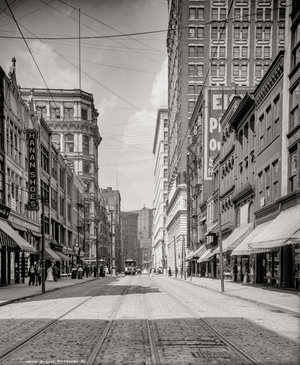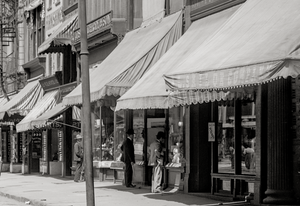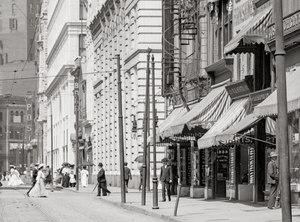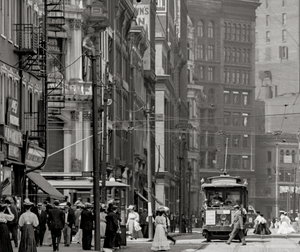Your Cart is Empty
Free and Fast Shipping | 30 Day Money Back Guarantee





Wood Street in Pittsburgh, Pennsylvania, holds a significant place in the city's history, reflecting its development from a frontier settlement to a bustling urban center. Its origins trace back to the early days of Pittsburgh when it was laid out in the late 18th century. The street has been a vital part of Pittsburgh's commercial and financial sectors, especially during the 19th and early 20th centuries.
Wood Street's history begins with the founding of Pittsburgh itself. As the city expanded, Wood Street became a central thoroughfare in the downtown area. Originally, it played a crucial role in the city's grid layout, designed to accommodate the growing needs of its residents and businesses. The street likely received its name from an early settler or perhaps due to its initial role in the lumber trade, which was a significant industry in Pittsburgh's early economy.
Throughout the 19th century, Wood Street grew in importance as a commercial and financial hub. It became home to numerous banks, office buildings, and retail establishments. The street's proximity to the Allegheny and Monongahela rivers facilitated trade and transportation, further enhancing its economic significance.
In the late 19th and early 20th centuries, Pittsburgh emerged as a leading industrial city, and Wood Street adapted to this transformation. It hosted several institutions that played critical roles in financing the steel and coal industries, which were central to Pittsburgh's economy. The presence of such institutions underscores Wood Street's importance in Pittsburgh's development as an industrial powerhouse.
Wood Street also boasts a rich architectural heritage, with several historic buildings that reflect various architectural styles from different periods. These structures include banks, office buildings, and theaters, contributing to the street's diverse cultural and historical landscape. The Wood Street Subway Station, part of Pittsburgh's light rail system, is another notable feature, representing the city's efforts to modernize its transportation infrastructure.
In recent years, Wood Street has experienced revitalization efforts, with the redevelopment of historic buildings and the introduction of new businesses and cultural institutions. These efforts aim to preserve the street's historical significance while adapting to contemporary urban needs.
Moreover, Wood Street's history is intertwined with education. It is home to the Art Institute of Pittsburgh, among other institutions, which has contributed to the street's vibrant cultural scene. The presence of educational facilities has fostered a creative environment, adding another layer to Wood Street's multifaceted identity.